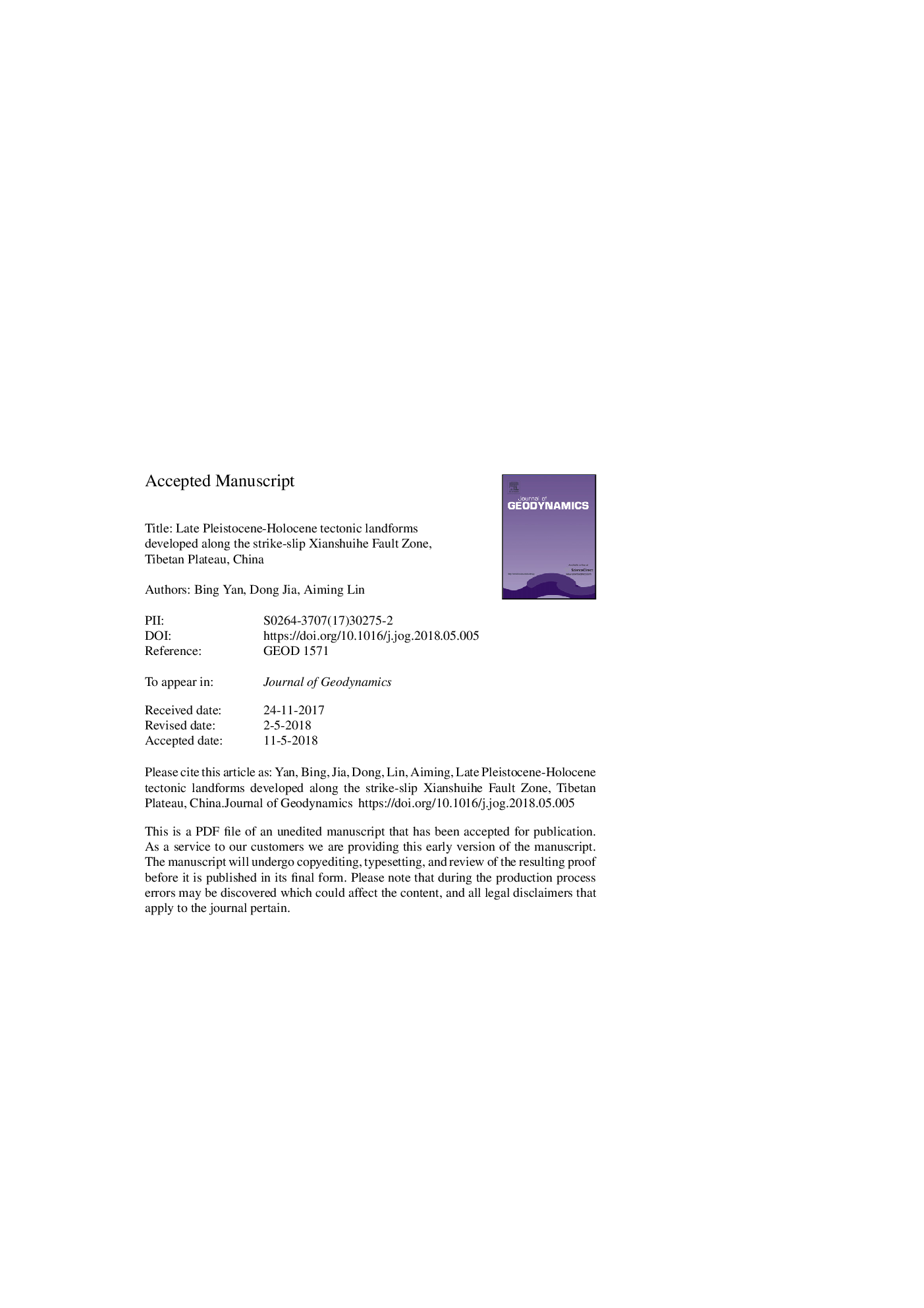| Article ID | Journal | Published Year | Pages | File Type |
|---|---|---|---|---|
| 8908369 | Journal of Geodynamics | 2018 | 38 Pages |
Abstract
Xianshuihe Fault Zone (XFZ), with a maximum sinistral offset of â¼60â¯km since 13-5 Ma, is one of the major active fault zones on the eastern Tibetan Plateau. In this study, we investigated the tectonic landforms and slip rate along the central segment of the left-lateral strike-slip XFZ. Field investigations and topographic features show that horizontal offset has been accumulated on the topographical markers of different scales formed since the Late Pleistocene. The central segment of the XFZ is composed of three major faults: Yalahe, Selaha, and Zheduotang faults arranged in a right-stepping echelon pattern, which is mainly characterized by systematical offset of drainages, alluvial fans and terrace risers with typical scissoring structures, indicating a feature of strike-slip fault. We have estimated that the Selaha and Zheduotang Faults participate a slip rate of 5.6â¯Â±â¯0.8â¯mm/yr and 3.4â¯Â±â¯0.4â¯mm/yr respectively of the total â¼10â¯mm/yr slip rate across the central XFZ, based on the offset glacial morphology and radiocarbon dates. The present results suggest that the left-lateral slip of the XFZ partitions the deformation of eastward extrusion and northeastward shortening of the central Tibetan Plateau to accommodate the continuing penetration of the Indian plate into the Eurasian plate.
Related Topics
Physical Sciences and Engineering
Earth and Planetary Sciences
Earth-Surface Processes
Authors
Bing Yan, Dong Jia, Aiming Lin,
